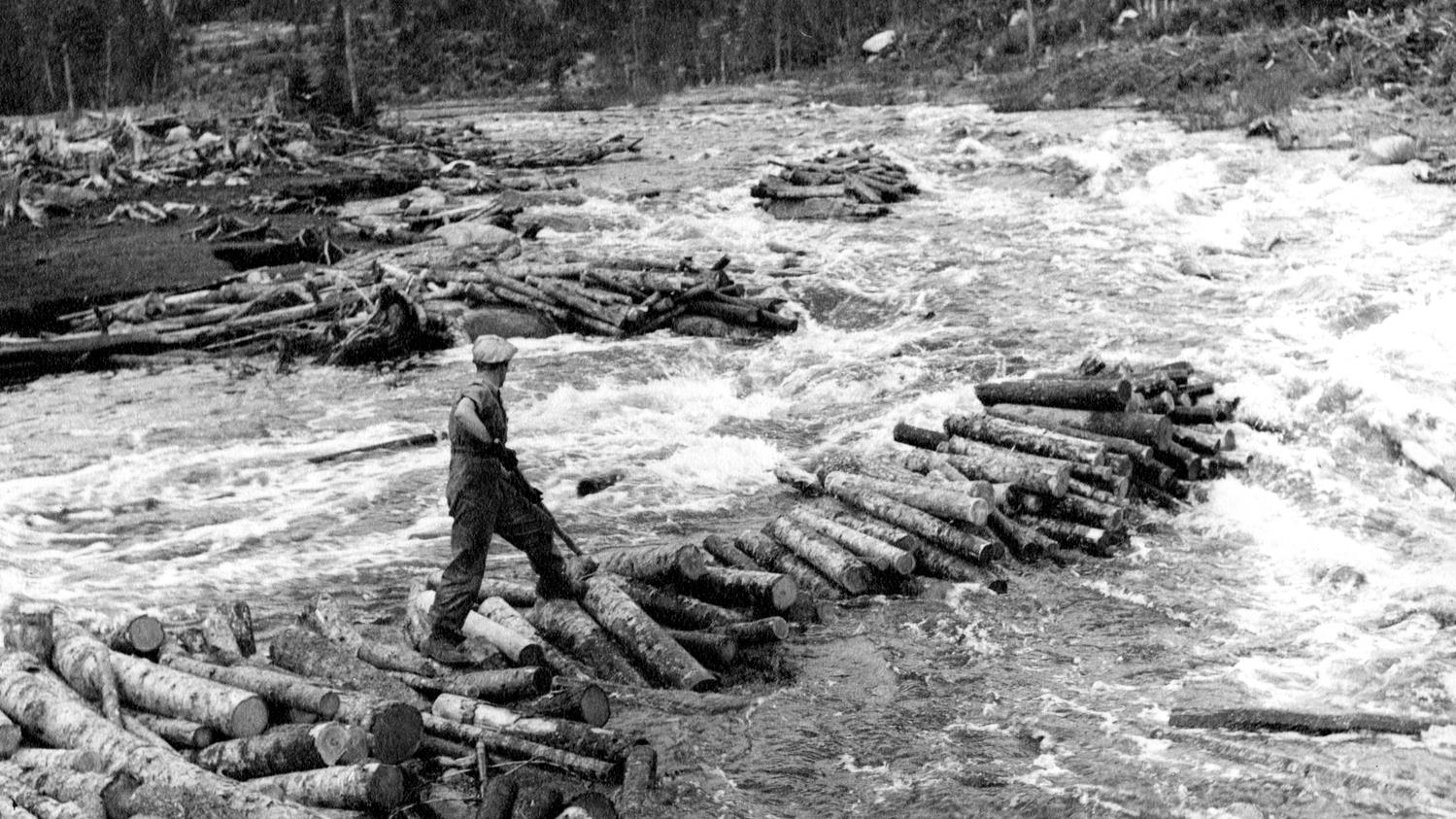In the spring, the raftsmen went into the woods, armed with poles, gaffs and log turners. Standing on the “pitounes” or in the water up to the waist, they made the logs cross hundreds of kilometers of rivers, waterfalls and lakes. Raymonde Beaudoin, author of the book Once upon a time there were log driverstells us the story of the log drive.
–
Raymonde Beaudoin’s father was a log driver and as a child she lived in a lumber camp for a year. It also specifies the difference between loggers and raftsmen. The loggers cut down the trees and there were nearly 35,000 in the 1940s, while “the loggers are those who transported the trees which floated freely on the river [jusqu’aux papetières] ».
The log drive dates back to the appearance of the paper mills in 1910 and was mainly practiced until the 1980s. The paper mills managed the log drive and hired the drivers, “who were difficult to find”, specifies Raymonde Beaudoin. The villagers accepted this hard work, because it was a little better paid than that of a woodcutter.
The living conditions of the loggers were “appalling”, but differed according to the places of logging. “People slept in tents, ate what they could,” says Raymonde Beaudoin. Some camps were more comfortable than others: “Conditions and work varied from place to place. »
A somewhat false folklore
This daredevil profession has inspired many works such as books Menaud, log driverby Felix-Antoine Savard, The hunting galleryby Honoré Beaugrand, and the song Gatineau Log Drivers, by Raoul Roy. Raymonde Beaudoin seriously questions the myth of the log driver capable of descending the river on a log. “It was a suicide bomber. There are never any log drivers who have worked in balance on a log”, she specifies.
The end of an era
During the 1970s, local residents and environmental groups lobbied for an end to the log drive. “Around 1980, these groups began to win,” explains Raymonde Beaudoin. At the same time, chemical processes for the manufacture of paper are discovered, and are gradually replacing pulpwood. Finally, the improvement of the road network greatly affected the log drive, which continued on the Saint-Maurice River until 1995.
For Raymonde Beaudoin, who wants the work of the log drivers to be recognized, “they weren’t thugs. They were resourceful, disciplined people. »
–


